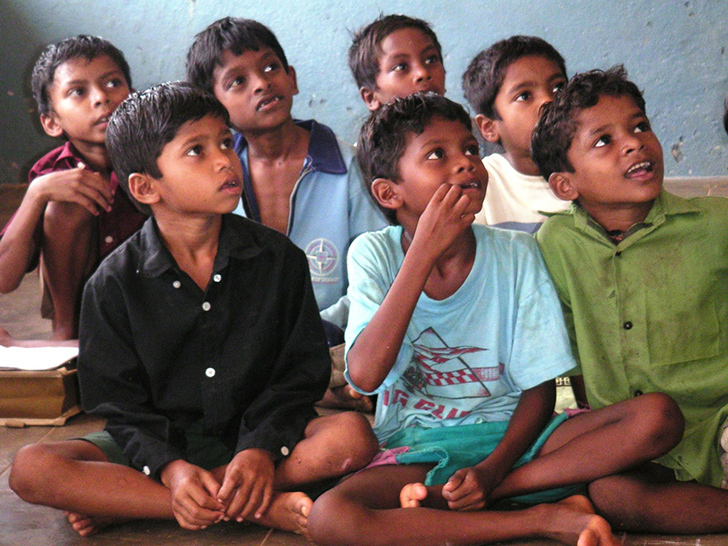

Language is our primary method of communication. It is one of the most important ways to express cultural values, thoughts, ideas and enables the transmission of experiences, traditions, knowledge and values across generations. The language we speak and the community we are part of forms our identity and worldview. To value a language and culture means we are valued.
There are about 7,000 languages spoken around the world today, but languages are disappearing at an alarming rate and linguistic diversity is increasingly threatened. When a language disappears, an entire cultural and intellectual heritage disappears with it. The loss of language is almost always accompanied by social and cultural disruptions and can contribute to psychological trauma. Minority and indigenous groups make up the majority of endangered languages and as many have lost, or had their traditional livelihoods reduced; education, intended to help find new ways, has actually contributed to this demise.
Language and education
Two-thirds of the world’s children grow up in multilingual environments. However, an estimated 40% do not have access to education in a language they speak or understand. Children from minority and indigenous language communities are thereby forced to abandon their first language when they go to school and try, often unsuccessfully, to learn in a language they barely understand. Children neither learn their own language and culture well, nor are they able to succeed in the new language or fit into the wider culture. This deficit impacts all aspects of life and results in a lack of self-worth, value and significance.
Where children are attempting to learn in an unknown language there are high dropout and low achievement levels, a failure in achieving national goals and a loss of human resource. It is accompanied by increased social discrimination and marginalisation resulting in non-participation of the community. The inclusion of girls is especially impacted and there is a high economic and social cost in attempting to address the high dropout rates. Where mother tongues are ignored, intergenerational divisions increase as children are further removed from their language and culture.
The UN Convention on the rights of the child states that “every child has the right to an education that enables him/her to fulfil their … potential”. To force children to learn in a language not their own is a social, political and personal injustice; it violates children’s linguistic, cultural and individual rights. So what can be done to ensure that in a child’s most vulnerable years they have access to an appropriate education and a positive learning environment, where every child is treated with respect, feels of worth and is valued?
Mother-tongue-based multilingual education
We know that children learn best from a familiar starting point. We know that continuity between home and school is important. We know that children feel secure in a learning environment where the content is rooted in the context of the culture and environment and, of course, where the language is known and understood. All of this improves children’s educational experience, increasing access, quality, duration of schooling and learning outcomes.
For many years now, it has been understood that an education programme which starts in the mother tongue improves access to and inclusion in education for minority and indigenous language communities. The classroom becomes an inviting and responsive place where the child’s experience is reflected in the learning process. Second and other languages are introduced gradually building on the language and concepts already learned in the mother tongue.
This improves retention and learning; dropout rates decrease and academic results increase. Learning first in their mother tongue provides a strong foundation that means children can make an effective transition to national and international languages. Fluency and understanding in all areas across all languages increases.
It encourages parents to be more involved in their children’s learning along with more community participation in education. It provides a sense of identity and maintains a connection with home, culture and community. Marginalised communities retain their linguistic and cultural identities. Improved skills mean more access to job opportunities and involvement in both local and wider communities. Overall, it is a more efficient use of resources, saving time and money for teachers and administrators over the mid to long term.


What is needed to build a sustainable multilingual programme?
It takes an enormous effort over a long period of time with a lot of collaboration between government, academic institutions, NGOs and communities to build strong and sustainable mother-tongue-based multilingual programmes. Many countries have multiple minority languages and the task often seems overwhelming, but where the effort has been made, the results have been worth it.
The potential of multilingual education is enormous but there is still a lot to do to increase access to such an education for all minority language communities.
Having taken part in developing curriculum materials in a number of minority language communities, I have had the privilege of gaining insights into their knowledge of the world, understanding of their environment and ways of living. As stories, riddles, poems, art, crafts and games, history from those cultures were collected and documented in their language for the first time, they felt they had an identity, that their language and they themselves had some dignity in society. Their language, their stories, their songs, their dances, their riddles, and they themselves had an equal status to every other language and community.
Dr Pamela Mackenzie has worked in education research and training with national and international government and non-governmental organisations. She helped to set up and support successful large-scale mother-tongue-based multilingual education programmes among indigenous and minority language communities.